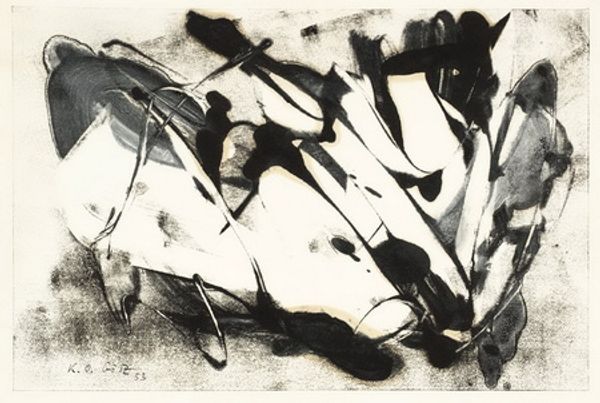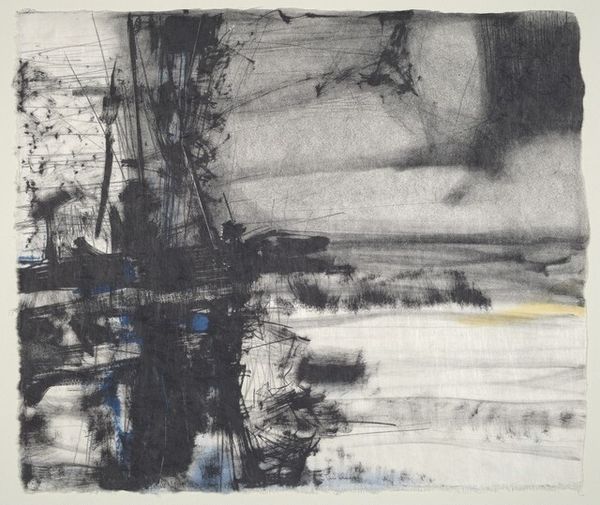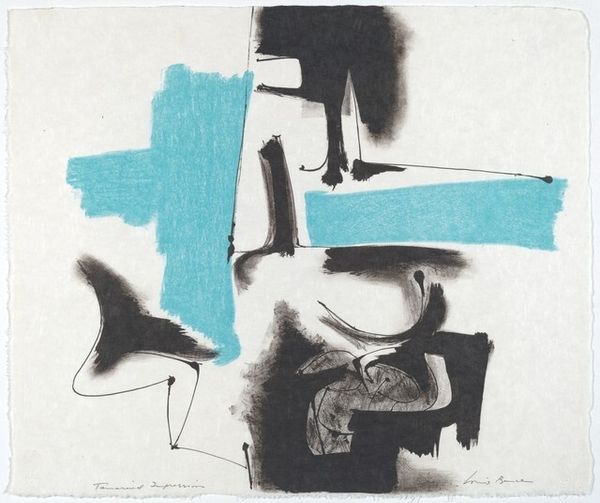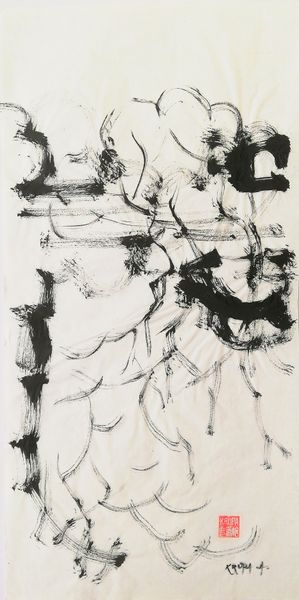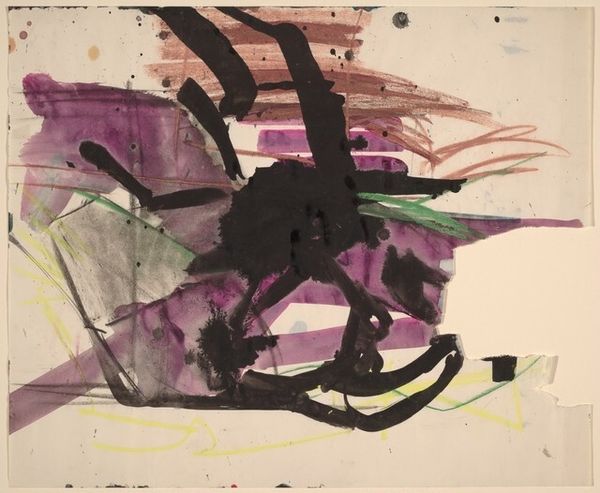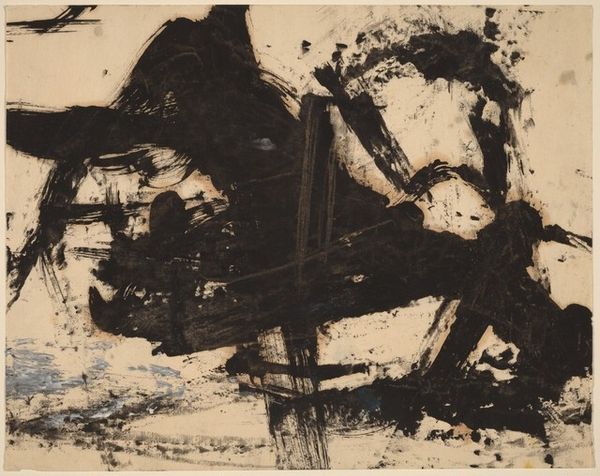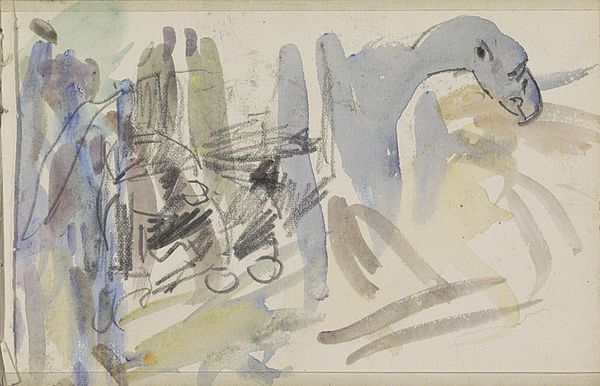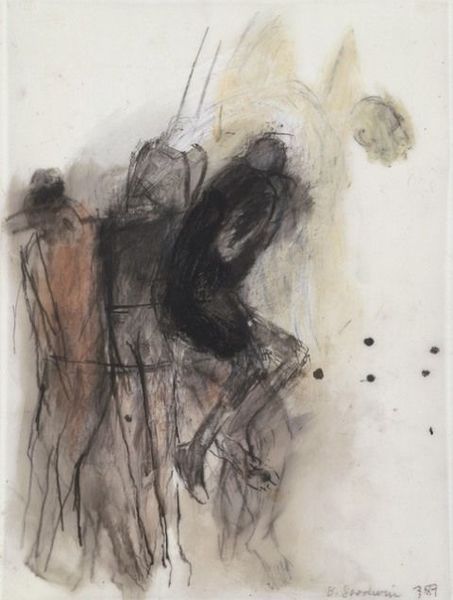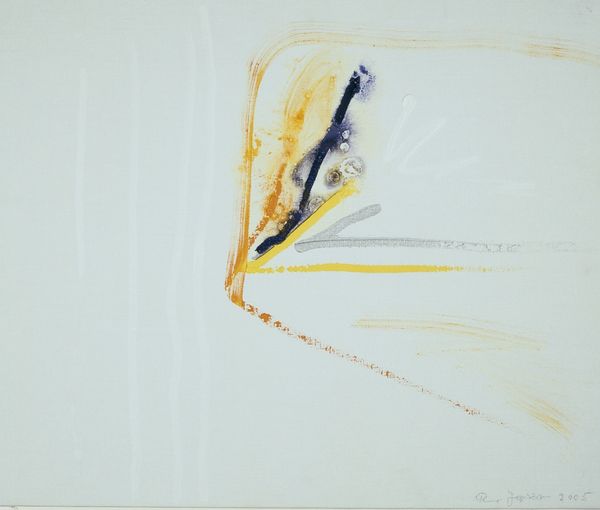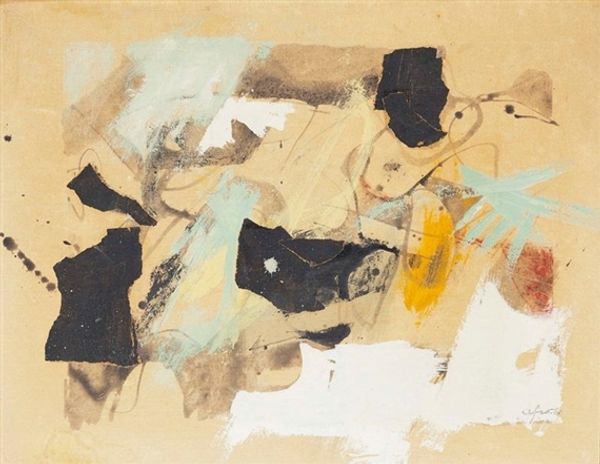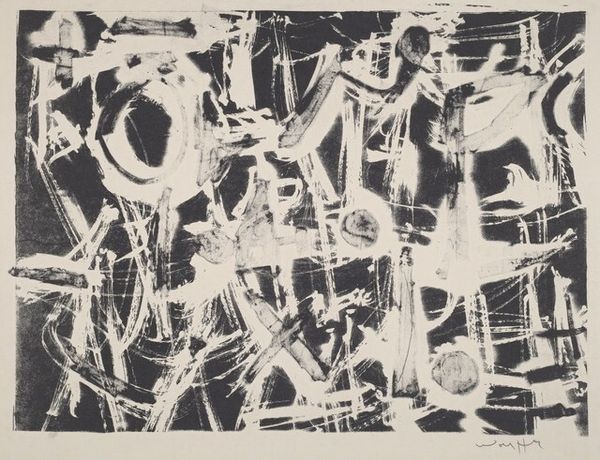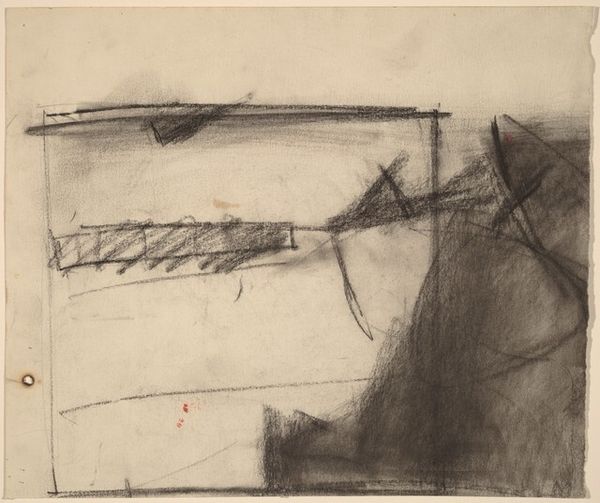
drawing, ink
#
abstract-expressionism
#
drawing
#
ink
#
abstraction
#
watercolor
Dimensions: sheet: 38.26 × 45.56 cm (15 1/16 × 17 15/16 in.)
Copyright: National Gallery of Art: CC0 1.0
Editor: Here we have Stephen Greene's "Maw 9" from 1961-62, created with ink. It has a kind of unsettling feel, with its indistinct shapes and somber palette. What do you make of it? Curator: Greene was deeply affected by the Second World War. I think this piece reflects the anxiety and existential questioning prevalent in the post-war period. How do you see the role of abstraction in conveying these themes? Is it effective or alienating? Editor: I can see that. The ambiguity definitely adds to the sense of unease. I’m wondering if the title “Maw” is a reference to something specific? Curator: “Maw” implies a gaping opening, a void. This ties into the anxieties of the era—the potential for annihilation, the questioning of traditional values. Notice how Greene’s style aligns with Abstract Expressionism which was heavily linked with freedom of expression and implicitly freedom *from* something, what could be artist be trying to say or flee from? Editor: Maybe the pressures of conformity of the time? Curator: Precisely! Think of the socio-political context—the Cold War, the rise of consumerism. Abstract Expressionism, though celebrated, also faced criticism for being elitist. Its seeming inaccessibility made it suspect for some audiences. Does this drawing make you consider ideas and context over forms? Editor: Definitely, the background helps ground it a bit. I see the ink blots less as just "blobs" and more like reflections of his time now. Curator: Precisely. That push and pull is really important to the interpretation of abstract works. Editor: I hadn’t thought of it in those terms before! Curator: It gives us all something to consider when understanding Abstract Expressionism and Greene’s career.
Comments
No comments
Be the first to comment and join the conversation on the ultimate creative platform.
